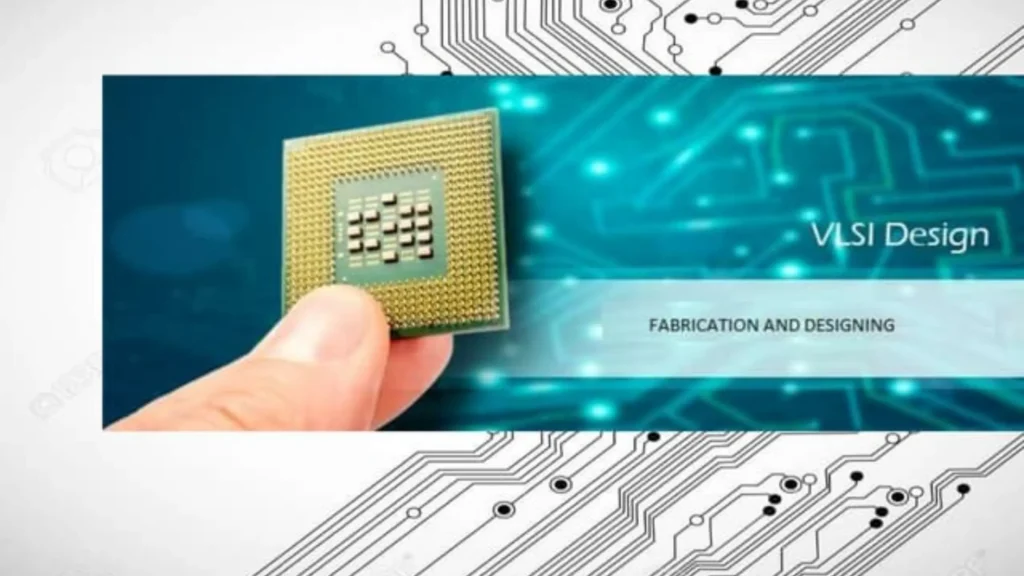VLSI (Very Large Scale Integration) is the process of creating integrated circuits by combining thousands to millions of transistors on a single chip. It enables the development of complex microchips that power modern electronic devices, from smartphones and computers to automotive systems and medical equipment.

VLSI technology plays a crucial role in the miniaturisation and enhancement of electronic systems, making devices more powerful, efficient, and compact. As a cornerstone of semiconductor technology, VLSI continues to drive innovations in electronics, influencing various industries and shaping the future of digital advancements.
Importance of Doing a VLSI Course for Career Boost
Pursuing a VLSI Course can significantly enhance your career prospects in the semiconductor and electronics industries. The course provides specialised knowledge and practical skills in chip design, verification, and fabrication, making you proficient in cutting-edge technologies. With the growing demand for advanced electronic devices, expertise in VLSI opens doors to high-paying roles in top tech companies, research institutions, and startups.
Additionally, it equips you with the ability to innovate and contribute to developing next-generation electronics, positioning you as a valuable asset in a highly competitive job market.
Neuromorphic Computing: Exploring Brain-Inspired Computing Architectures in VLSI
Neuromorphic computing mimics the neural structure of the human brain to create more efficient and powerful computing systems. In VLSI, this involves designing circuits that replicate the behaviour of neurons and synapses. Neuromorphic VLSI architectures aim to process information in parallel, enabling faster and more efficient computations than traditional sequential processing methods.
- Key Benefits: Reduced power consumption, improved processing speed, and the ability to handle complex, real-time data.
- Applications: Robotics, artificial intelligence, and sensory processing systems.
Quantum Computing in VLSI: Integrating Quantum Principles into Traditional VLSI Design
Quantum computing leverages the principles of quantum mechanics to perform computations far more efficiently than classical computers. Integrating quantum principles into VLSI design involves developing circuits capable of handling qubits instead of traditional bits.
- Key Benefits: Exponentially increased processing power and the ability to solve complex problems that are currently intractable.
- Challenges: Maintaining qubit stability and minimising errors in quantum states.
- Applications: Cryptography, optimisation problems, and complex simulations.
Bio-Inspired VLSI: Applying Biological Systems’ Principles to VLSI Circuitry
Bio-inspired VLSI design takes inspiration from biological systems to develop more efficient and adaptive circuits. This approach often involves mimicking biological processes such as adaptation, learning, and self-repair.
- Key Benefits: Increased adaptability, resilience, and efficiency in circuit design.
- Applications: Medical devices, environmental monitoring systems, and adaptive control systems.
VLSI for Wearable Technology: Designing Low-Power, High-Performance Circuits for Wearable Devices
Wearable technology demands circuits that are both high-performance and low-power to ensure longevity and usability. VLSI design for wearables focuses on miniaturisation, energy efficiency, and integration of various sensors and communication modules.
- Key Benefits: Extended battery life, enhanced user experience, and increased functionality.
- Applications: Fitness trackers, smartwatches, and medical monitoring devices.
VLSI for Internet of Things (IoT): Optimizing Circuits for IoT Applications, from Sensors to Edge Computing Devices
The Internet of Things (IoT) requires highly efficient VLSI circuits to manage the vast amount of data generated by interconnected devices. VLSI for IoT focuses on developing circuits that are compact, energy-efficient, and capable of real-time processing.
- Key Benefits: Reduced power consumption, enhanced connectivity, and real-time data processing.
- Applications: Smart homes, industrial automation, and environmental sensing.
VLSI for Autonomous Vehicles: Implementing Robust and Efficient Circuits for Autonomous Driving Systems
Autonomous vehicles rely on advanced VLSI circuits for real-time data processing, sensor integration, and decision-making. These circuits must be robust, reliable, and capable of handling the high-speed data requirements of autonomous systems.
- Key Benefits: Improved safety, efficiency, and reliability of autonomous vehicles.
- Applications: Self-driving cars, drones, and robotic systems.
VLSI in Medical Devices: Enhancing Medical Diagnostics and Treatments through Advanced VLSI Technologies
VLSI plays a crucial role in the development of advanced medical devices. These circuits provide high precision and reliability and are used in imaging systems, diagnostic equipment, and wearable health monitors.
- Key Benefits: Enhanced diagnostic accuracy, improved patient outcomes, and reduced healthcare costs.
- Applications: MRI machines, portable diagnostic tools, and implantable medical devices.
Energy Harvesting in VLSI: Developing Circuits that Capture and Utilize Ambient Energy Sources
Energy harvesting involves capturing ambient energy from sources like solar, thermal, and kinetic energy and converting it into electrical power. VLSI circuits designed for energy harvesting are critical for powering low-energy devices and reducing reliance on traditional power sources.
- Key Benefits: Increased energy efficiency, sustainability, and reduced battery dependency.
- Applications: Remote sensors, wearable devices, and low-power electronics.
Secure VLSI Design: Strategies for Ensuring Cybersecurity and Protection against Hardware-Based Attacks
As cybersecurity threats become more sophisticated, secure VLSI design is essential to protect hardware from attacks. This involves implementing security features at the chip level, such as encryption, secure boot, and tamper detection.
- Key Benefits: Enhanced data security, protection of intellectual property, and prevention of unauthorised access.
- Applications: Financial systems, military applications, and secure communications.
VLSI in Space Applications: Designing Radiation-Tolerant Circuits for Space Exploration and Satellite Communications
Space applications demand VLSI circuits that can withstand extreme conditions, including radiation. Radiation-tolerant VLSI designs ensure reliable performance in space, where traditional circuits would fail.
- Key Benefits: Increased reliability, durability, and performance in harsh environments.
- Applications: Satellites, space probes, and deep-space communication systems.
By exploring these innovative areas, VLSI technology continues to advance, driving progress across multiple industries and paving the way for future breakthroughs.
Conclusion
The ever-increasing demand for sophisticated electronic devices means that expertise in VLSI not only opens up lucrative career opportunities in leading tech firms and startups but also empowers you to be a key player in developing cutting-edge technology. Pursuing a VLSI Chip Design Course is a strategic move for anyone aiming to thrive in the dynamic and competitive landscape of modern electronics.

